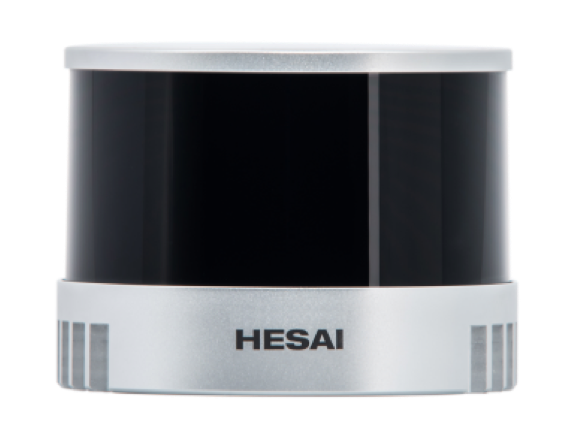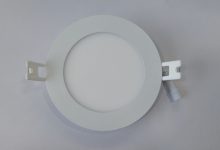Hesai Technology: Providing Lidar for Planned Cratus Warehouse Robots
Understanding Hesai Technology and Cratus Robotics

In the rapidly advancing world of robotics and automation, technology plays a vital role in improving efficiency and productivity. One such technology that has gained significant attention is lidar, which stands for Light Detection and Ranging. Lidar is a remote sensing method that uses laser beams to measure distances and create detailed 3D maps of the surroundings. Hesai Technology, a pioneering company in the field of lidar technology, has recently announced its collaboration with Cratus Robotics to provide lidar solutions for their warehouse robots. This article delves into the details of this partnership and its potential implications for the robotics industry.
Understanding Hesai Technology and Cratus Robotics
Hesai Technology is a leading provider of lidar technology solutions. With a strong focus on innovation and quality, the company has established itself as a trusted name in the lidar industry. Their lidar sensors and systems are known for their high accuracy, reliability, and versatility, making them ideal for various applications.
On the other hand, Cratus Robotics is a renowned robotics company specializing in the development of advanced warehouse robots. These robots are designed to streamline operations, enhance efficiency, and reduce human intervention in warehouses and logistics centers.
The Role of Lidar in Robotics
Lidar technology plays a crucial role in enabling robots to perceive and navigate their environment effectively. By emitting laser beams and measuring the time it takes for the light to return after hitting an object, lidar sensors create accurate 3D representations of the surroundings. This data helps robots detect obstacles, identify objects, and determine their precise position in real-time.
With the increasing demand for automation in various industries, lidar has become an indispensable component in robotics. Its ability to provide detailed and reliable spatial information enables robots to perform tasks autonomously and with enhanced precision.
Hesai Technology’s Lidar Solutions
Lidar Technology Overview
Hesai Technology offers a wide range of lidar sensors and systems tailored to the specific needs of different industries. Their lidar products are based on cutting-edge technology and are designed to deliver exceptional performance in terms of accuracy, range, and resolution.
Applications in Robotics
In the field of robotics, Hesai’s lidar solutions find applications in various domains. These include autonomous navigation, object detection and tracking, collision avoidance, and mapping. By integrating Hesai’s lidar technology into their robots, manufacturers can enhance the capabilities of their machines, making them more efficient and reliable.
Benefits of Hesai Lidar for Cratus Warehouse Robots
The collaboration between Hesai Technology and Cratus Robotics brings together their respective expertise to create advanced warehouse robots equipped with state-of-the-art lidar technology. Here are some of the benefits that Cratus warehouse robots can leverage from Hesai’s lidar solutions:
- Accurate Localization: Hesai’s lidar sensors enable precise localization of the robots within the warehouse environment, ensuring they can navigate accurately and avoid collisions.
- Obstacle Detection: With high-resolution 3D mapping capabilities, Hesai’s lidar technology helps the robots detect and avoid obstacles in real-time, minimizing the risk of accidents and damage to goods.
- Improved Efficiency: By providing accurate and up-to-date spatial information, Hesai’s lidar allows Cratus warehouse robots to optimize their paths, reducing travel time and maximizing operational efficiency.
- Enhanced Safety: The integration of Hesai’s lidar technology ensures that the robots operate safely in dynamic environments, mitigating potential hazards and ensuring the well-being of human workers.
The Collaboration between Hesai Technology and Cratus Robotics
The partnership between Hesai Technology and Cratus Robotics marks an important milestone in the advancement of robotics in the warehousing industry. By combining Hesai’s lidar expertise with Cratus Robotics’ proficiency in developing intelligent robots, both companies aim to deliver cutting-edge solutions that redefine the capabilities of warehouse automation.
The collaboration involves the integration of Hesai’s lidar sensors and systems into Cratus warehouse robots. This integration empowers the robots with advanced perception capabilities, enabling them to operate autonomously in complex and dynamic environments.
Future Implications and Advancements
The collaboration between Hesai Technology and Cratus Robotics paves the way for significant advancements in the field of warehouse robotics. As the demand for automation continues to grow, the integration of lidar technology into robots will become even more critical. The partnership serves as a testament to the potential of lidar in enhancing the capabilities and performance of robots in various industries.
With ongoing research and development, it is anticipated that future iterations of Cratus warehouse robots will leverage Hesai’s lidar technology to achieve even greater levels of autonomy, adaptability, and efficiency. This collaboration sets the stage for the next generation of intelligent warehouse robots that can revolutionize the logistics and e-commerce sectors.
Conclusion
Hesai Technology’s collaboration with Cratus Robotics represents a significant step forward in the integration of lidar technology into the field of robotics. By providing advanced perception capabilities to Cratus warehouse robots, Hesai’s lidar solutions contribute to the automation and optimization of warehouse operations.
As the partnership between Hesai Technology and Cratus Robotics evolves, we can expect to witness further advancements in the field of warehouse automation. With the power of lidar technology, Cratus warehouse robots will continue to redefine efficiency, safety, and productivity in the ever-evolving world of logistics.








